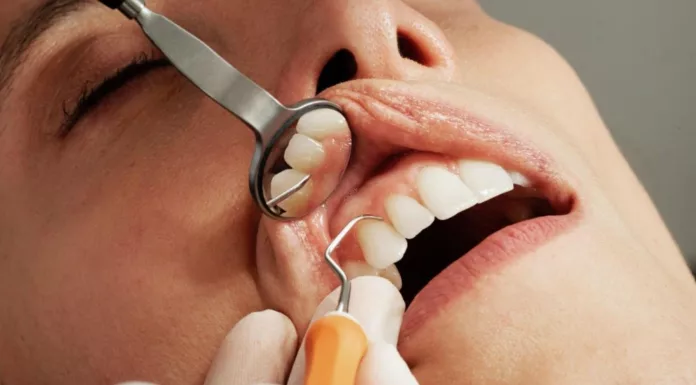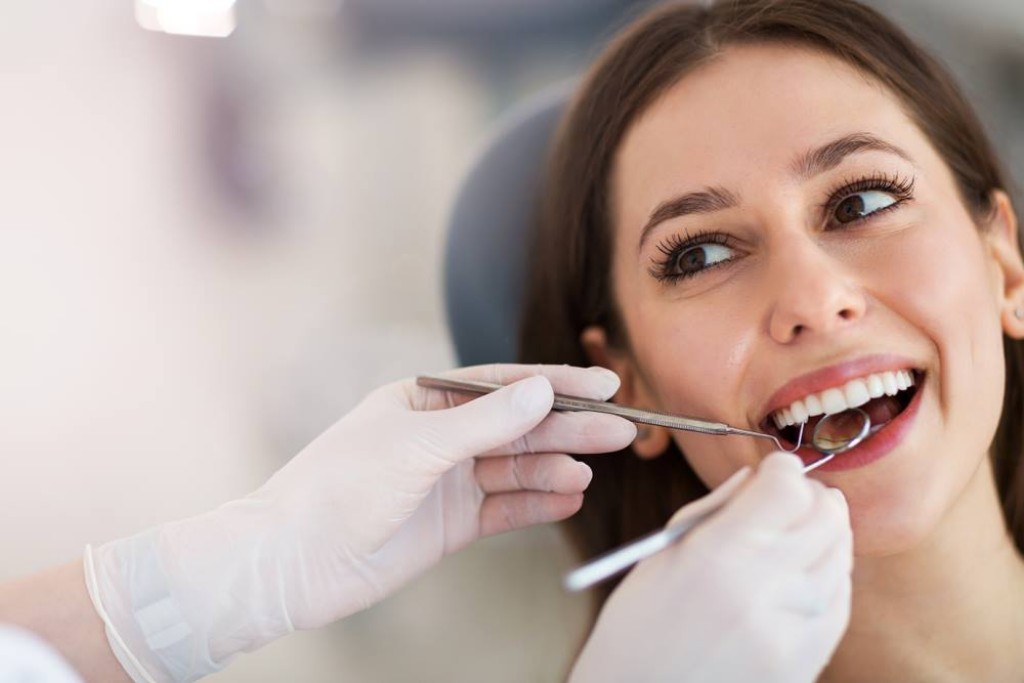Tooth decay is one of the most common health conditions on Earth, and it’s almost completely preventable by great dental hygiene like regular brushing and flossing. And for an even more effective clean, it’s best to schedule a checkup and cleaning with your dentist every six months.
So What is a dental cleaning? How is it done? What kind of tools do they use? And why are they done by a dental hygienist rather than your dentist?
Why Dental Cleaning is Important?
Plaque accumulates between teeth and along the gum line as a result of poor dental hygiene. Periodontitis and gingivitis are brought on by plaque buildup. Bad breath and tooth decay are caused by bacteria that flourish.
Regular dental cleanings can help you avoid a number of oral health problems, including tooth decay and periodontal disease. Overall mental health can also be affected if you skip regular dental cleaning. Bad breath, visible plaque, or yellowed teeth might keep you from smiling as much, and that can even affect self-esteem.
Even deeper than that, oral health problems can affect your overall health. Tooth and gum infections can spread to other areas of the body. That can cause or exacerbate conditions like pneumonia, rheumatoid arthritis, osteoporosis, and even heart attack or stroke.
Two Types of Dental Cleaning
There are two types of dental cleaning which are Routine and Deep cleaning
- Prophylaxis cleaning, also known as routine cleaning is done for healthy people who only need routine maintenance to maintain their oral health. During a routine dental cleaning, your hygienist uses specialized tools to remove tough tartar deposits and sticky plaque from the surfaces of your teeth above your gum line.
- Deep cleaning or Scaling and root planing clean below the gum line. This helps to clean areas of your teeth that are difficult to access, such as the roots and pockets at the base of your teeth. Patients who either currently have gum disease or are at an increased risk of acquiring gum disease are the only ones who are typically prescribed this medication.
Who Performs Dental Cleaning?
Most teeth cleanings are performed by a dental hygienist, not a dentist. Although both dentists and dental hygienists provide care for patients, the two professions do it in distinct ways. Dental hygienists assist dentists with patient care and cleanings. They are unable to do sophisticated procedures, although they can provide assistance to dentists.
Tools For Dental Cleaning
To perform successful teeth cleaning, dental hygienists use specific tools such as:
- Mirrors – The mirror is the most crucial piece of equipment the dental hygienist uses since it enables them to see behind your teeth. That lets them better search for pockets between teeth and gums, swelling, and other anomalies that need to be addressed. They may also use a bright light in the mirror.
- Scalers – Plaque and tartar are scraped off by a scaler. Plaque can be reduced by brushing and flossing, but tartar requires a dentist to remove it. Using a dental scaler, our hygienist gently scrapes deposits from the surface of each tooth to remove tartar.
- Curettes – Tartar can be removed from beneath the gums using a curette. The hygienist can remove dental calculus, a hard deposit at the base of the teeth. This tool has a rounded, spoon-shaped end with a hole in it.
- Probe – Probes are used to evaluate the depth of the pockets surrounding a tooth and to examine the condition of the gums. The probe includes millimeter-scale markings down its side and functions as a ruler.
- Saliva ejectors – This is a suction device that helps keep your teeth dry when it is necessary, such as during a procedure in which a filling is being placed, and removes the need for you to spit over a sink.
Steps included in Dental Cleaning
A teeth cleaning process is typically quick and painless. Some of the procedures for dental cleaning are listed below:
- A physical exam – Most tooth cleanings are performed by a dental hygienist. A thorough examination of your entire mouth takes place before the cleaning operation begins. The dental hygienist checks the region around your teeth and gums using a small mirror to look for any signs of gingivitis (inflamed gums) or other potential problems. If the dental hygienist sees any major problems, they may refer to the dentist for additional treatment.
- Plaque and tartar removal – Using a small mirror as a guide, the dental hygienist uses a scaler to remove tartar and plaque from the spaces between your teeth and from the area along your gum line. This is when they will scrape any hardened tartar off of the teeth.
- Gritty toothpaste cleaning – Your teeth will be thoroughly cleaned of tartar before the hygienist uses a high-powered electric brush. Although it may seem frightening, it’s a terrific technique to deep clean and cleans off any tartar that the scaler may have left behind.
- Flossing – Nothing compares to a professional flossing session, whether you floss at home frequently or not. Your dental hygienist can access the spaces in between your teeth and find any potential problem areas where your gums can bleed. Even though flossing your teeth at home may seem unnecessary, having a professional do so also removes any toothpaste or plaque that may have remained after a previous cleaning.
- Rinsing – Swishing and spitting with water will help clear the toothpaste and any loose tartar left behind.
- Fluoride treatment – A fluoride treatment is the last step. For several months, this procedure acts as a shield to protect your teeth from cavities.
Keeping Your Teeth Clean
Preventive dentistry through regular dental cleaning helps patients maintain their natural teeth in the best condition for as long as feasible. Regular and thorough dental cleanings are essential for preventing gum disease-related infection and tooth loss.
Every adult should get a periodontal evaluation at least once a year, as recommended by the American Academy of Periodontology, to determine whether or not they need any extra periodontal therapy. If the dental hygienist finds any signs that could point to periodontal disease, they may discuss their findings with a dentist in order to proceed with the cleaning.


